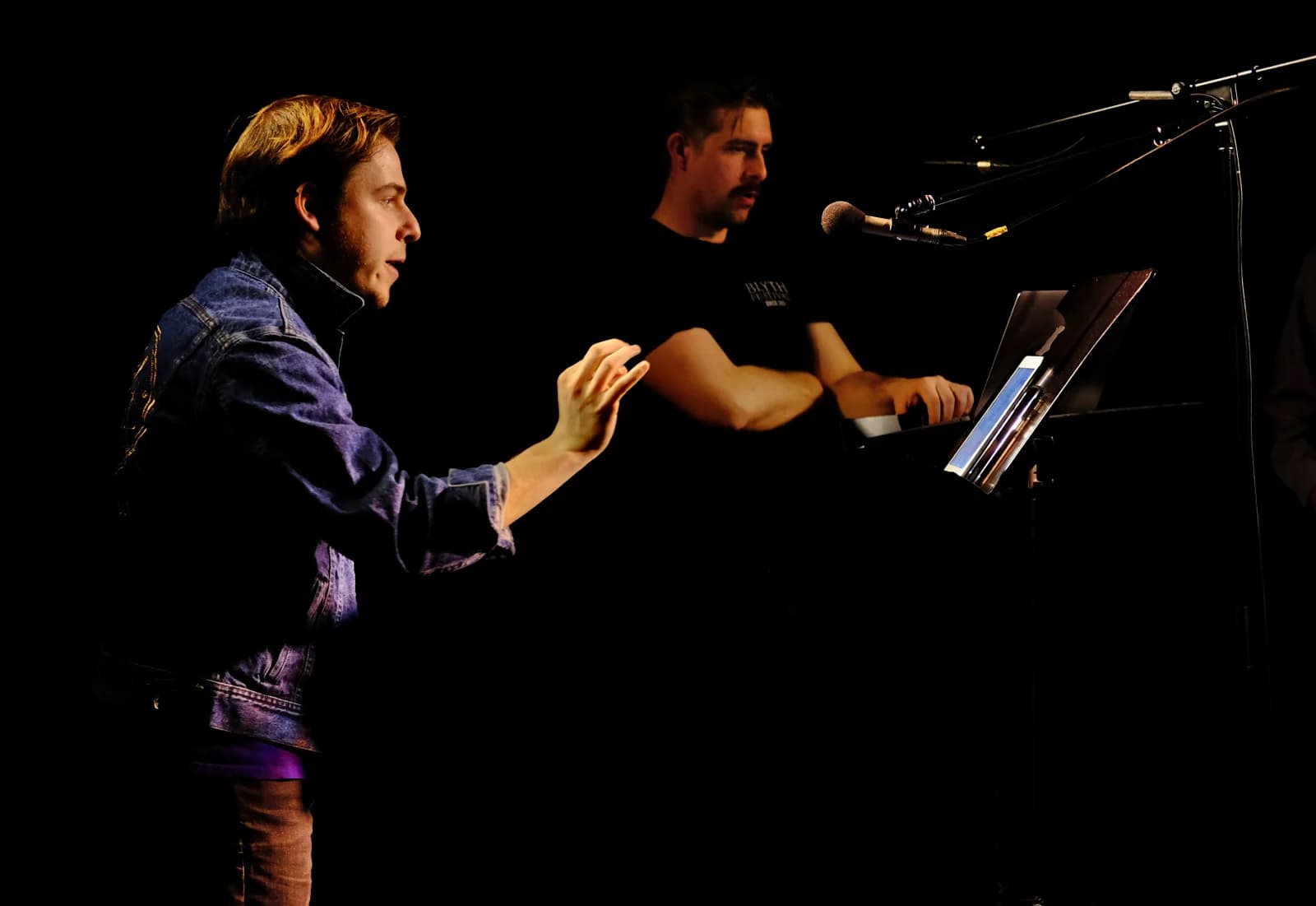*Justice: A Holocaust Zombie Story** *is a fiction podcast that debuted Aug. 31, 2024. The bold concept centers on a young Canadian woman who travels to Berlin to meet her estranged family—only to be thrust into a burgeoning global crisis when zombified Holocaust victims begin rising from the mass graves of former concentration camps. While the German government panics and antisemitic conspiracy theorists run amok with online hate, the protagonist realizes nobody is listening to the victims themselves, one of whom is not only peaceful—but mysteriously drawn to her.
The controversial production, a work of subversive and gothic Holocaust education designed for a digital age, was a significant undertaking created by The Canadian Jewish News Podcast Network, which has accumulated more than 1.8 million downloads since its inception in May 2021 and averages 60,000+ listeners per month. It found production partners in the Ashkenaz Festival, North America's largest celebration of Jewish music, arts and culture; and Dandelion Theatre, a Toronto-based independent theatre company specializing in oral storytelling.
**Problem**
The seven-episode miniseries involved a cast of eight professional actors recording on five microphones set up in a black box theatre in downtown Toronto. The team recorded 490 takes in three days, which multiplied into three different files: a main .wav file, a backup file and a Reaper peak file. On top of the nearly 1,500 original audio files, the team had to add hundreds of sound effects, additional cameos recorded offsite, an original score by a local composer, graphic design elements and photography. The amount of data became quickly overwhelming.
Additionally, collaboration would be critical, given that the production team was spread across Ontario, Canada. One team member proposed creating a Microsoft Excel spreadsheet for both directors to write out timecodes of rough cuts and provide comments within. That process sounded needlessly cumbersome. So they found a better way.
**Goals**
• Keep all audio files, backups and multimedia assets organized
Find an alternative to typing out timecodes of rough cuts on a Microsoft Excel spreadsheet
Have a single source of truth for all collaborators and stakeholders
**Solution**
Quickly after recording, five members of the post-production team—the sound designer, two directors, a producer and the composer—were onboarded to an Alteon workspace.
In a single day, the sound technician safely uploaded the roughly 1,500 main files to an Online storage bucket in Alteon, granting peace of mind and secure access to the rest of the team. Each file was labelled by day and microphone, making it easy to apply metatags to sort out which actors were speaking and mark takes by scene.
The team created new folders for each episode, including subfolders for backups and peaks. Additional primary folders were created for photography, logos and score. Once versions of whole episodes began rolling in, they were uploaded to their respective folder, where everyone could leave time-stamped, colour-coded comments—and avoid typing out potentially confusing notes on a spreadsheet.
Once episodes were close to finished, the mastered .wavs files—as well as stem files (isolated, aligned audio tracks)—were all uploaded to their respective subfolders, allowing full flexibility to make any minor adjustments before uploading and publishing to an audience of thousands.
By the end of the project, the total amount of data totalled slightly less than 50 GB. While nowhere near the size of a video production, the crew was still grateful to not have to worry about data limits imposed by free versions of Google Drive or WeTransfer, which would have made sharing 5 GB of stems impossible.
From beginning to end, Alteon proved to be an invaluable tool for the remote audio production team—an ideal solution for podcasters and digital storytellers looking to stay organized and efficient.
